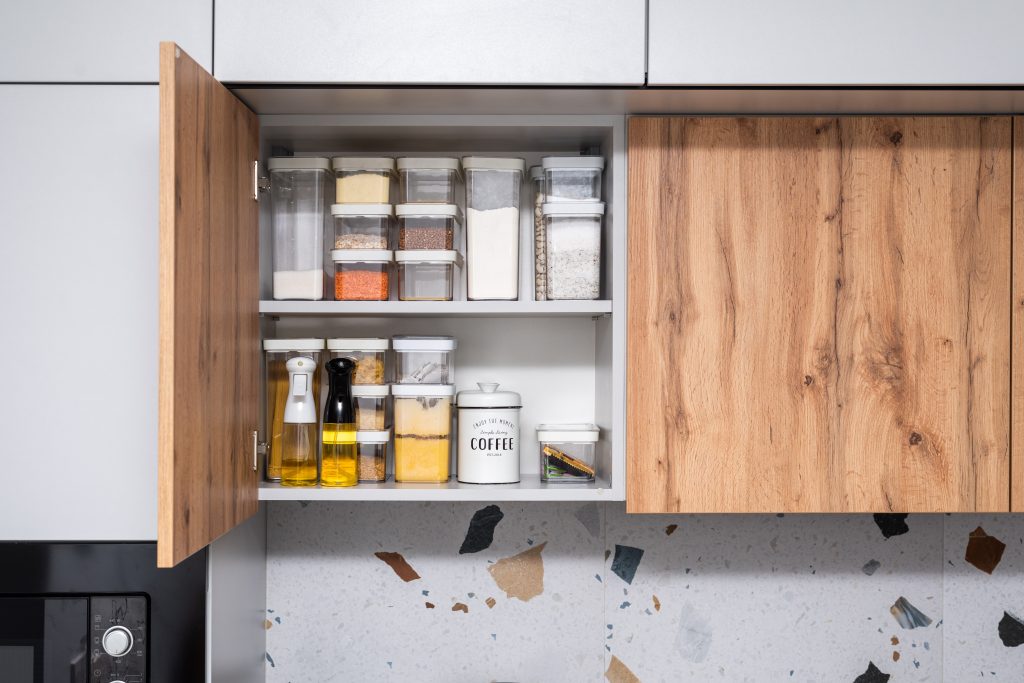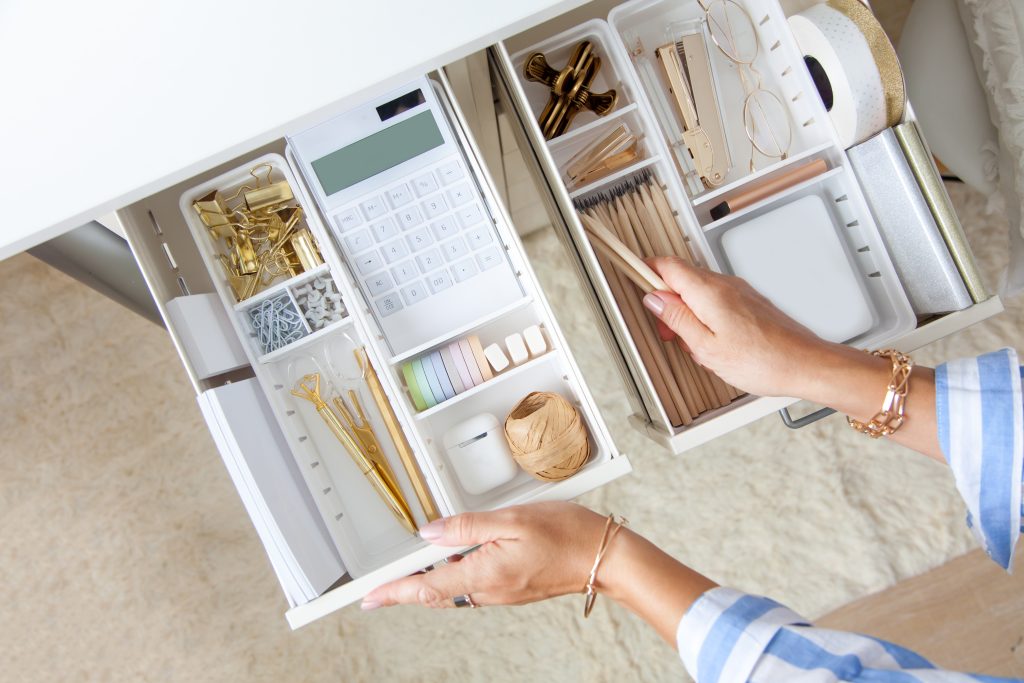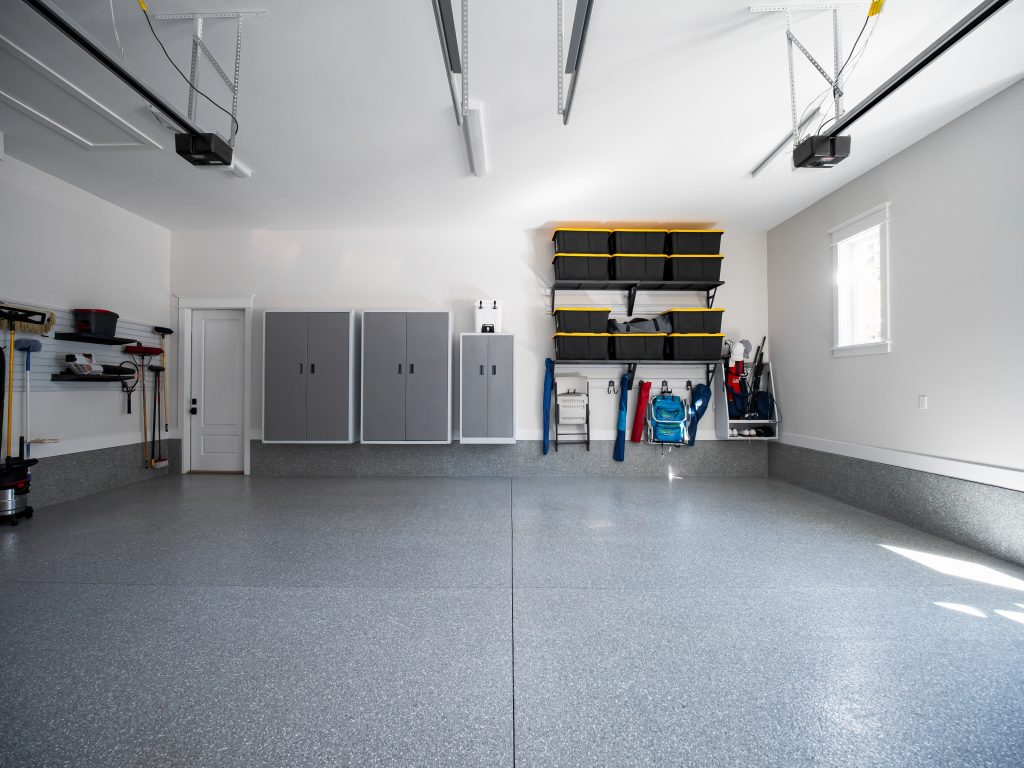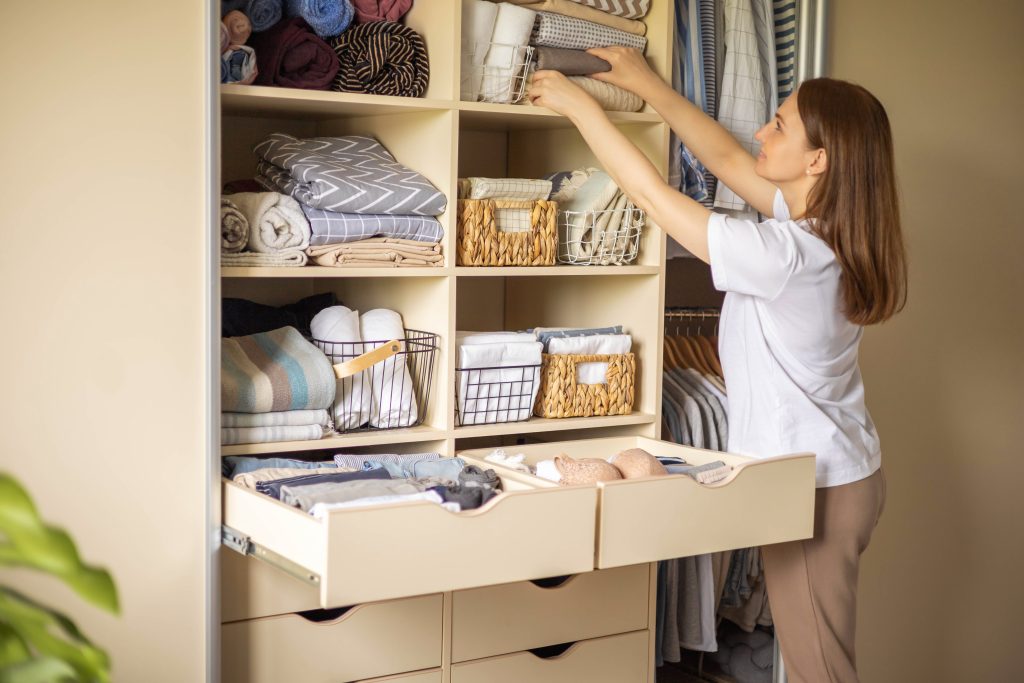Whether you’re a first-time homeowner or a family going through a life transition, keeping your home tidy can be challenging. Sometimes a whole day of cleaning feels wasted when the mess returns in 24 hours. If you’re feeling defeated by all the clutter, you’re in the right place. NSA Storage has the best organization tips for the messiest rooms in your house.
How to Organize a Kitchen
The kitchen is sometimes called the heart of a home. Parents and children alike are in and out throughout the day, grabbing snacks or cooking meals. This can lead to a mess come bedtime, one that you might be too tired to deal with. But just because your sink is full of dishes doesn’t mean your countertops have to be a disaster. Use these easy kitchen organization tips and make life a little easier
Kitchen Organization Tip #1: Sort Your Pantry Items
It’s tempting to just throw your dry goods wherever they fit, but this leads to an unoptimized pantry and confusion at mealtime. Try sorting your food items by what they’re used for and how often they’re used. Baking staples like flour and sugar should be grouped together and put on a higher shelf (unless you use them often).

Everyday items like your family’s favorite snacks should be lower for easy access. Pasta and rice can have their own section, and so on. This strategy is custom to your family and what you need from the pantry most often.
Kitchen Organization Tip #2: Sort Your Dishes
A similar principle can be used to organize your dishware. The things you use every day, such as plates, bowls, and drinking glasses, should be on the lower shelves. That large serving platter that you only use around the holidays can be stored on a higher shelf. The same goes for appliances: if you use your toaster every day, it’s okay for it to have a home on the counter. If not, consider storing it in a larger cabinet or even on top of your cabinets.
How to Organize a Nursery
It’s always a good idea to start planning your nursery organization strategy before your bundle of joy comes home for the first time. Ideally, you should work organization hacks into the building of the nursery. However, if baby’s already here and your nursery is a mess, it’s not too late. Here are some great tips for organizing a nursery at any stage in your parenting journey.
Nursery Organization Tip #1: Getting the Right Furniture
A baby’s room is usually pretty small, so you don’t want to waste space on lots of bulky furniture. Try to find pieces that fulfill multiple purposes; ideally, ones with storage built in. Cribs with slide-out drawers at the base are a great place to keep baby’s clothes, toys, or even extra bottles and diapers.
Dressers and changing tables can take up a lot of space. Luckily, some baby dressers have built-in changing pads on top, combining two pieces of furniture into one. You can store wipes and diapers in the top drawer to make changing quick and easy. Lower drawers can be used for clothes and blankets. We suggest separating stored items with dividers to keep drawers neat.
Nursery Organization Tip #2: Have Dedicated Spaces for Toys
If the nursery doubles as your baby’s play-space, it’s important to keep toys off of the ground and out-of-sight when it’s not time to use them. This will save you from stepping on sharp corners or tripping over stuffed animals, and it will help your baby develop a healthy routine. From a young age, children associate their toys with playing, which is an exciting time. If the toys are always visible, it may make bedtime more difficult. Toys should have a dedicated bin or drawer that keeps them out-of-sight unless Mom or Dad gets them out. Modeling clean-up and organization will also teach your child how to tidy a space as they get older.
How to Organize a Home Office
For people who work remotely, the home office is an important space. It needs to be stress-free so that you can focus and be productive. Studies show, however, that a cluttered workspace can increase stress levels and decrease quality of work, not to mention your overall mental health. Here are our best tips for organizing a home office so that you can work in mental peace.
Home Office Organization Tip #1: Choose Function Over Style
“Minimalism” is a trendy aesthetic, especially for home offices. While we agree with the notion of having less visible stuff, it’s difficult to realistically accomplish that when your furniture has no built-in storage. A sleek, modern desk with no drawers might look nice, but it’s not going to function how you need it. You’ll end up with a cluttered desktop and a stressful workspace.

Go for a desk with drawers and shelves where you can store writing utensils, printer supplies, and chargers within easy reach. If you find yourself stacking papers on your desktop, you might even consider a filing cabinet; it’s not trendy, but it is practical!
Home Office Organization Tip #2: Take Care of Your Cords
One of the biggest struggles for office organization is all of the cords and cables. Lamps, computers, and cellphones all need to be plugged in sometimes, but the cords laying around your home office are both ugly and dangerous. There are some cheap items you can buy that might help with this issue. Cable clips can be installed on the side of underside of your desk to lift cords off the floor and hold them in place. If you use a power strip, cable management boxes can hide them and keep cords from tangling when not in use. If you don’t want to buy new gadgets, you can also go the DIY route. Permanent cords—like a floor lamp cord—can be taped down against the baseboards so they’re hidden and out of the way.
How to Organize a Mudroom or Entryway
It goes by a lot of names: breezeway, foyer, mudroom. It’s the place that everyone has to walk through as they enter your home. That means that it’s the room most exposed to the outside elements. People bring dirt in on shoes and coats, especially if you have kids, and it often ends up here. Organizing your entryway can help keep it clean and stop the mess from getting to the rest of your home.
Mudroom Organization Tip #1: Have a Dedicated Space for Shoes
Shoes are the biggest problem in a mudroom. It’s important to have a clear space for them so that they don’t end up littering the floor. A shoe rack is a great way to dedicate a place for shoes and take advantage of vertical space. A rubber shoe mat can work too. We recommend investing in a couple of quality rubber mats for this area, especially if you live somewhere with a lot of rain or snow. Water coming off of shoes will leave stains on your floors, but mats can hold the moisture and are easy to shake off outside.
Mudroom Organization Tip #2: Store Cleaning Supplies in a Nearby Closet
If your mudroom has a coat closet, it’s a good idea to store some cleaning supplies in it as well. A broom and a mop are a good place to start. Like we said, mudrooms are some of the dirtiest places in houses. When your kids come in from playing outside, you’ll be more likely to clean up after them if the cleaning supplies are close by. You can easily sweep up dirt and leaves and toss them right in the trash—or even back out the front door.
How to Organize a Bathroom
The bathroom is one of those rooms where you need a lot of things to be readily accessible: toilet paper, first-aid, hygiene products, etc. At the same time, you don’t want your personal items on display on the counter, especially if you have company. Proper bathroom organization gives you easy access to the things you need while hiding the things you don’t want others to see or touch.
Bathroom Organization Tip #1: Install Hooks and Caddies
Although every shower is different, there is a storage solution for every type. If you have the right shower head, you can get a shower caddy that hangs from it to hold your hair products and soap. Another option is a tension rod storage system, with shelves to hold everything you might need. This gets those pesky bottles off the bathtub ledge.
Towels can be hung on a towel rod, but if you’re not savvy enough to install one, you can get hooks that go over the bathroom door—no drill or hammer necessary. For extra towels, emergency toilet paper, and air freshening products, a slim bathroom storage cart can roll right in next to the toilet.
Bathroom Organization Tip #2: Save Under-Counter Space for Personal Items
Most modern vanities have some amount of under-counter storage, even if it’s just one cabinet. It may be tempting to store things like towels here, but this space should be saved for things that you don’t necessarily want other people to see: Personal hygiene products, medicines, and cleaning products. This is also important if you’re ever going to have children or pets in the house. Items that could be dangerous to them should be kept out of sight.
How to Organize a Garage
Garages fulfill many roles when it comes to storage. Tools, sporting equipment, and yard decorations often end up in garages alongside your vehicles. Because visitors rarely see the space, there’s less incentive to keep it tidy, but organizing your garage can make it much easier to find items when you need them.
Garage Organization Tip #1: Take Advantage of Vertical Space
The biggest culprit of clutter in garages is storing items on the floor. The floor space should be reserved for vehicles and workspaces. Try to keep tools and stored items off the ground by creating functional vertical storage solutions. For example, a peg board with hooks is a cheap way to store your tools where you can easily access them.

Tall storage cabinets take up minimal floor space and create convenient storage for seasonal decoration, sports gear, and outdoor toys. If you have bikes, consider mounting bike racks on the walls or ceiling so that your bikes can be stored out of the way of your vehicles.
Garage Organization Tip #2: Label Your Bins or Use Clear Containers
There’s nothing worse than going through box after box trying to find an item you haven’t used in a year. An easy way to relieve some of that frustration is to make it clear what each storage container holds. You can do this by either labeling your bins (some masking tape and a marker will work) or using clear containers so that you can see what’s inside. We recommend doing both; that way, you have the best chance of keeping things organized and easy to find.
Self-Storage Can Help Keep Your Spaces Tidy
Sometimes, organization tips can only take you so far. If you have too much stuff for your space, don’t have a yard sale just yet! Instead, rent a storage unit from NSA Storage and free up some space in your home. Self-storage is great for storing seasonal items when they aren’t needed, like warm winter clothing or holiday decorations. You can access your items when you need them and rotate what you store through the seasons.
NSA Storage has storage facilities across the country, providing convenient extra space to individuals and families alike. Visit one of our storage facilities near you or give us a call to find the perfect storage solution for you.





